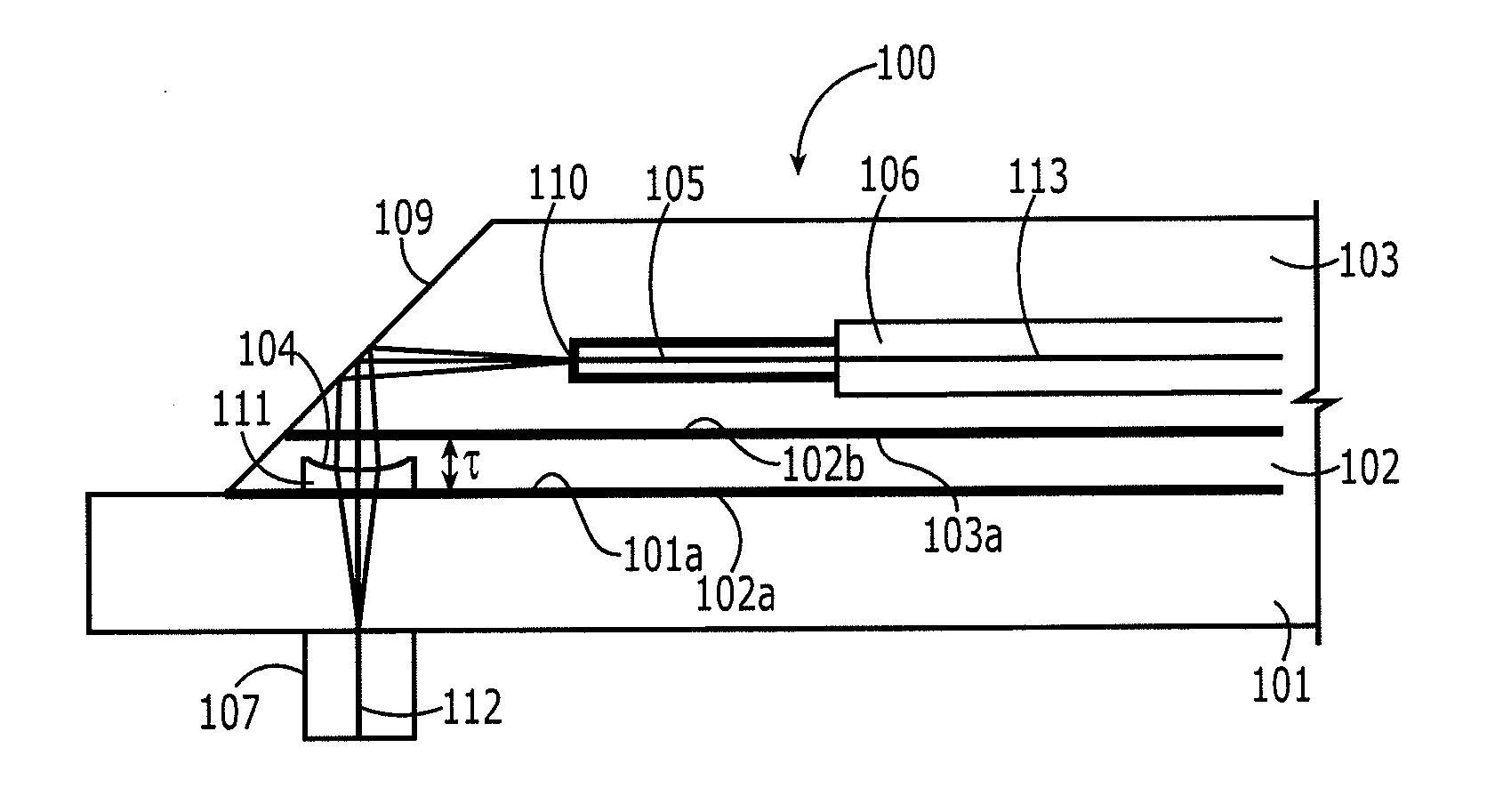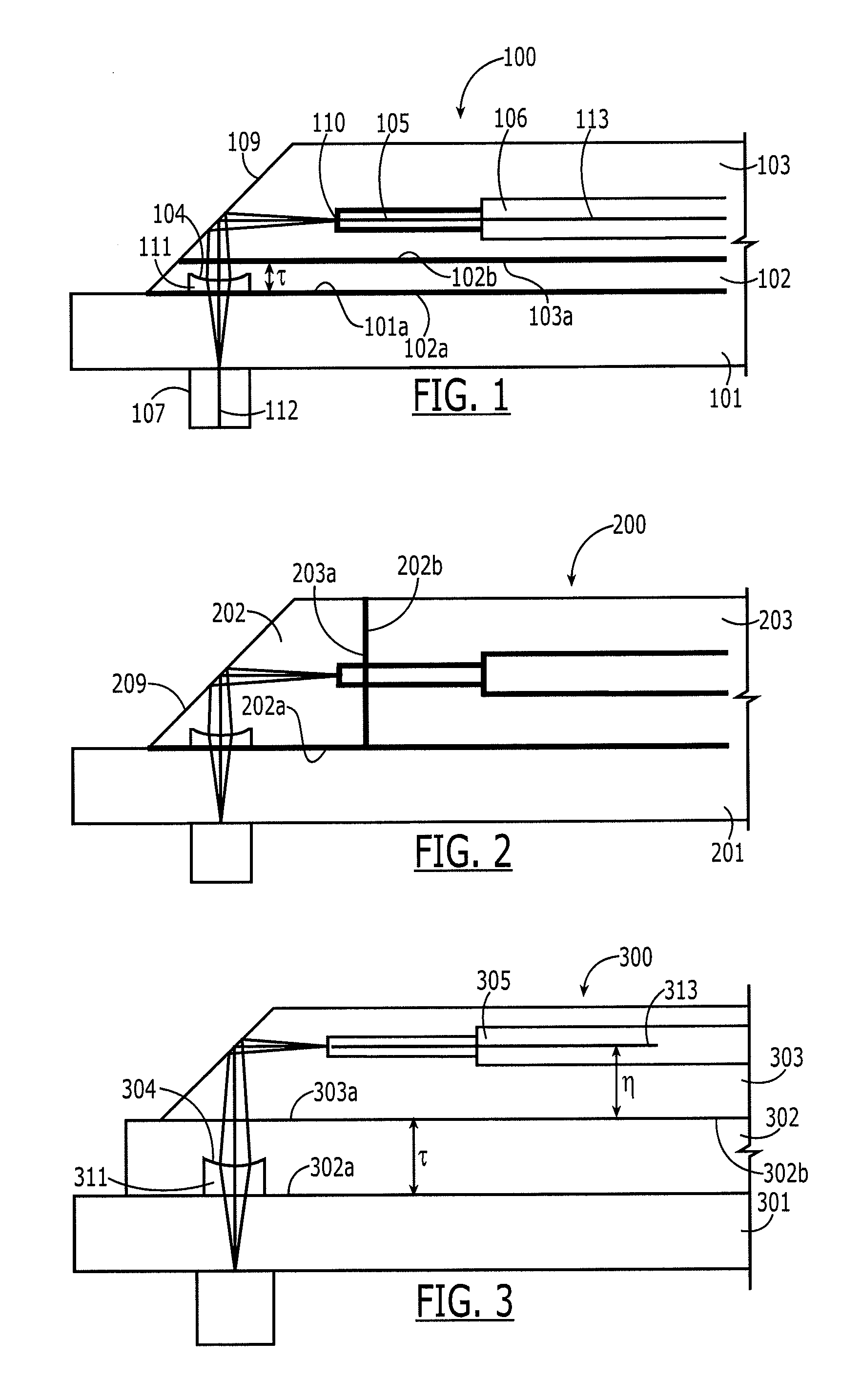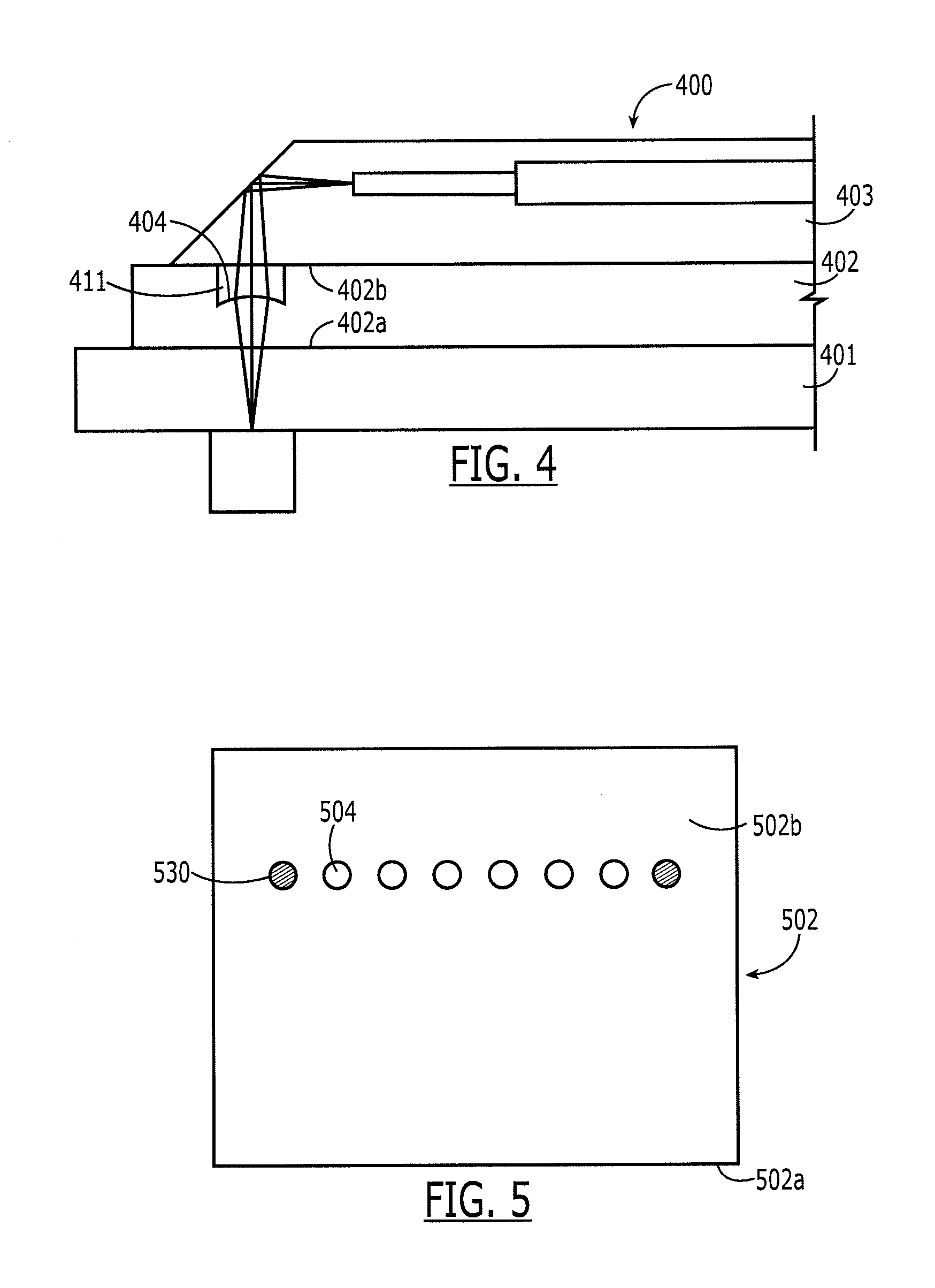Modularized interposer
a module-based, interposer technology, applied in the field of optical coupling, can solve the problems of compound optical couplings increasing exponentially the complexity of manufacturing the interposer, and achieve the effects of simplifying the manufacture of components, increasing exponentially the complexity of manufacturing, and facilitating passive alignmen
- Summary
- Abstract
- Description
- Claims
- Application Information
AI Technical Summary
Benefits of technology
Problems solved by technology
Method used
Image
Examples
Embodiment Construction
[0028]Referring to FIG. 1, one embodiment of the interposer 100 of the present invention is shown. As shown, the interposer 100 optically couples the optical device 107 to a fiber 106. The optical device 107 is mounted on a substrate 101. The interposer comprises a lens component 102 comprising at least one lens 104 defined by a cavity 111 for optically coupling with the OED 107. The lens has a first optical axis 112 essentially perpendicular to the substrate 101. The lens component 102 also has first surface 102a for mating with a top surface 101a of the substrate 101, and a second surface 102b for mating with a third surface 103a of a fiber component 103. The fiber component 103 comprises the third surface 103a and a cavity 105 for receiving at least one fiber 106 and holding the fiber along a second optical axis 113. The first and second optical axes are essentially perpendicular. At least one of the lens component 102 or the fiber component 102 comprises a reflective surface 109...
PUM
 Login to View More
Login to View More Abstract
Description
Claims
Application Information
 Login to View More
Login to View More - R&D
- Intellectual Property
- Life Sciences
- Materials
- Tech Scout
- Unparalleled Data Quality
- Higher Quality Content
- 60% Fewer Hallucinations
Browse by: Latest US Patents, China's latest patents, Technical Efficacy Thesaurus, Application Domain, Technology Topic, Popular Technical Reports.
© 2025 PatSnap. All rights reserved.Legal|Privacy policy|Modern Slavery Act Transparency Statement|Sitemap|About US| Contact US: help@patsnap.com



